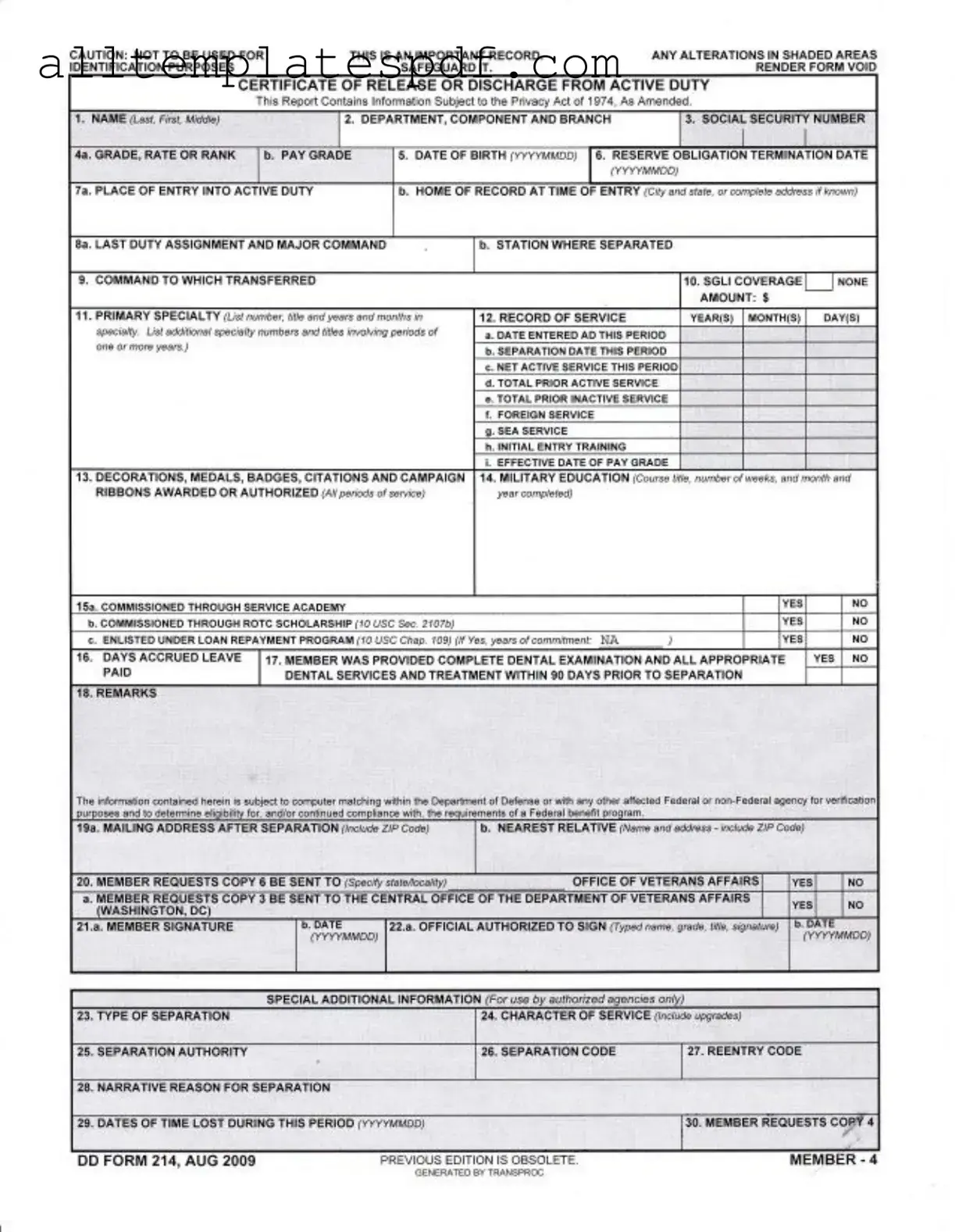Completing the DD 214 form is crucial for veterans, as it serves as a record of military service. However, several common mistakes can lead to complications. One frequent error is incorrect personal information. Veterans sometimes misspell their names or provide inaccurate Social Security numbers. This can cause delays in processing and may lead to issues when accessing benefits.
Another mistake involves the failure to include all necessary dates. Veterans often forget to enter their date of birth or the dates of service. Omitting these details can create confusion and hinder the verification of service records. It's essential to double-check that all dates are accurate and clearly written.
Some individuals neglect to fill out shaded areas properly. The instructions indicate that alterations in these areas render the form void. This means that any changes made without following the guidelines can invalidate the entire document, requiring the veteran to start over.
In addition, many veterans overlook the importance of the mailing address after separation. Providing an outdated or incorrect address can prevent important documents from reaching the veteran, which may affect their ability to receive benefits or communicate with the Department of Veterans Affairs.
Another common issue is the omission of required signatures. Both the member and the official authorized to sign must complete their respective sections. Failure to do so can result in delays or rejection of the application.
Veterans may also misinterpret the section regarding dental examination services. Some individuals mistakenly check "yes" or "no" without understanding what is being asked. This can lead to confusion and potential issues with dental coverage.
Additionally, errors in the military education section can occur. Veterans sometimes fail to list all relevant training or education, which can impact their eligibility for certain benefits. It is crucial to provide a complete record of military education.
Finally, many veterans forget to request copies of their DD 214 to be sent to the appropriate offices. Not checking these boxes can lead to difficulties in obtaining necessary documentation later on. Ensuring that all sections are filled out completely and accurately is vital for a smooth transition to civilian life.
